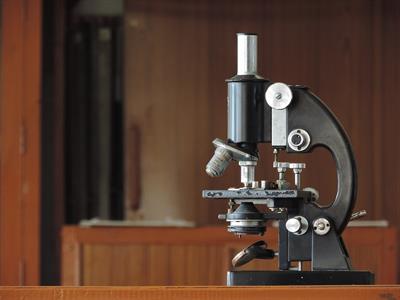PDF chapter test TRY NOW
Construction and working of compound microscope
A compound microscope is also used to see tiny objects. It has better magnification power than a simple microscope. Microscope magnification can be increased by shortening the focal length of the lens used. The focal length of the lens cannot be reduced beyond a certain point due to constructional constraints. Two separate biconvex lenses can be used to solve this problem.
Construction:
A compound microscope has two convex lenses. The lens with short focal length is placed near the object and is called an objective lens or objective piece. The lens with large focal length and larger aperture placed near the observer’s eye is called an eye lens or eyepiece. Both the lenses are fixed in a narrow tube with adjustable provision.

Compound microscope
Working:
The object (AB) is positioned at a distance slightly greater than the objective lens' focal length (\(u > f\)). On the other side of the objective lens, a real, inverted, and magnified image (\(A'B'\)) is formed. This image behaves as if it were a lens for the eye. The position of the eye lens is adjusted so that the image (A'B') falls within the eyepiece's primary focus. On the same side of the object, this eyepiece creates a virtual, enlarged, and erect image (\(A"B"\)). A compound microscope has a magnification power of \(50\) to \(200\) times that of a simple microscope.
Travelling Microscope:
A travelling microscope is one of the most accurate instruments for measuring very small lengths with a precision of \(0.01\) \(mm\). It operates using the vernier principle. It has a minimum count of \(0.01\) \(mm\).
